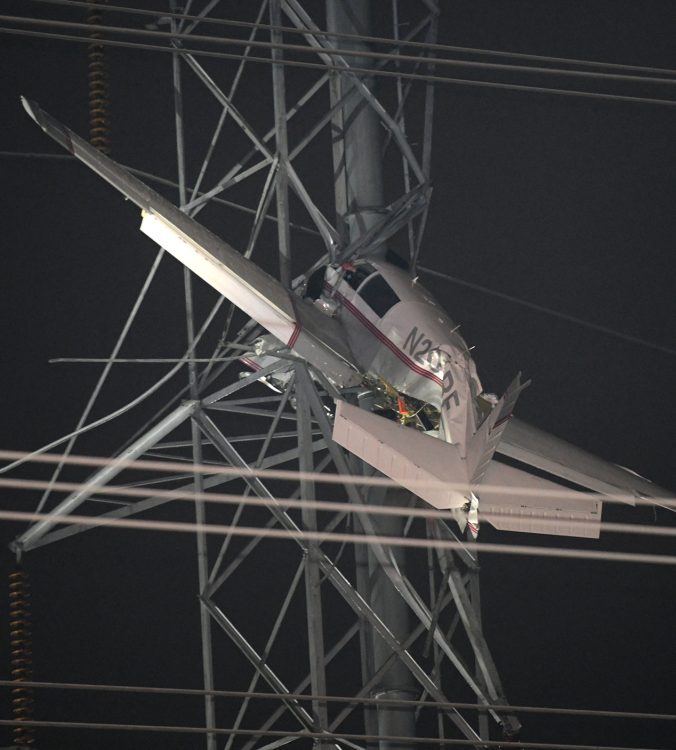On November 27, 2022, a private plane with one pilot and one passenger aboard crashed into a Pepco transmission tower in Montgomery County, Md. Emergency responders, with the close collaboration of Pepco personnel and contractors, developed and performed a safe and complex rescue mission, saving two lives. Rick Giammaria, Pepco senior staff photographer, documented the event through his eyes.
At 5:38 on a foggy Sunday evening, Jeff Chai, Pepco senior manager of substations, noticed the lights in his home flicker. Minutes later, he was brought into an emergency response call to determine how Pepco would work with our partners to facilitate the rescue of two passengers stranded in a small plane, safely remove the plane from a transmission tower, and restore electric service to more than 85,000 Maryland customers.
Chai arrived on the scene shortly thereafter, prepared to serve as the field incident commander and lead the on-site coordination of Pepco’s response. Off-site, Pepco Director of Transmission and Substation, Debbie Yakubics, took the helm as the incident commander leading a cross-functional taskforce to ensure the field crew had the resources, personnel, tools, equipment, and information they would need.
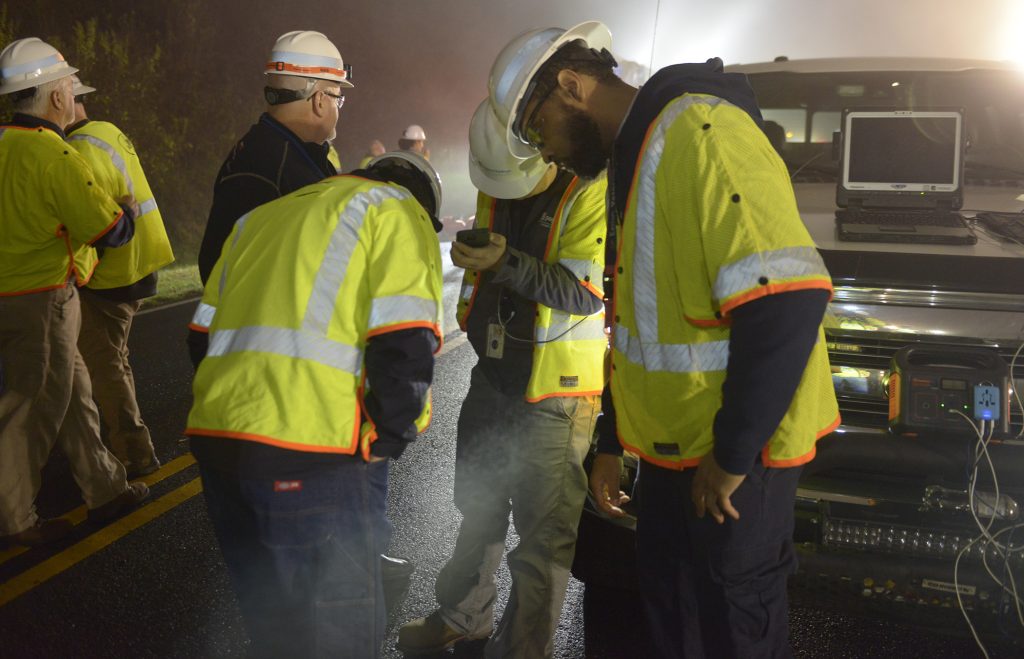
“When we first got on site, Montgomery County Fire and Rescue personnel were eager to climb the tower and get those people out of the plane. But at the time, the tower wasn’t yet electrically safe, and we couldn’t guarantee that that the tower was structurally sound after the crash,” Chai explained. “Our top priority was the safety of our crews and first responders along with the victims of the crash.”
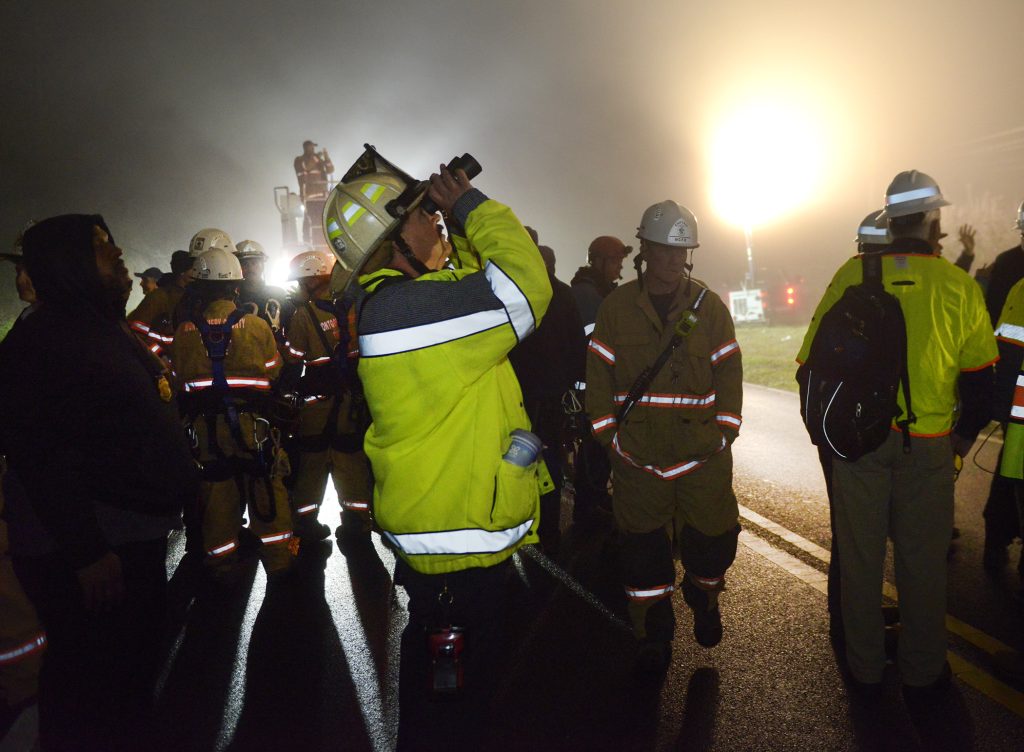
As Pepco and aerial transmission contractor, AUI Power, gathered at the scene along with Montgomery County Fire & Rescue Service (MCFRS), Montgomery County Police Department, and other responders, a plan came together to ensure all wires were grounded and de-energized, and that the plane would be secured to the tower for stability.
With the transmission tower’s stability uncertain, the team waited on transmission aerial platform trucks with longer reach that could extend the full length of the tower. Holiday traffic and foggy weather increased the commute time.
Pepco Senior Staff Photographer, Rick Giammaria, a 33-year company veteran who has captured a range of situations over his career, was the photographer closest to the scene. He had never experienced anything like this. He described the wait for the trucks: “Everyone was just constantly looking up and watching the plane. They knew what the rescue plan was, but it was going to take time to execute. We couldn’t do anything but watch and wait.”
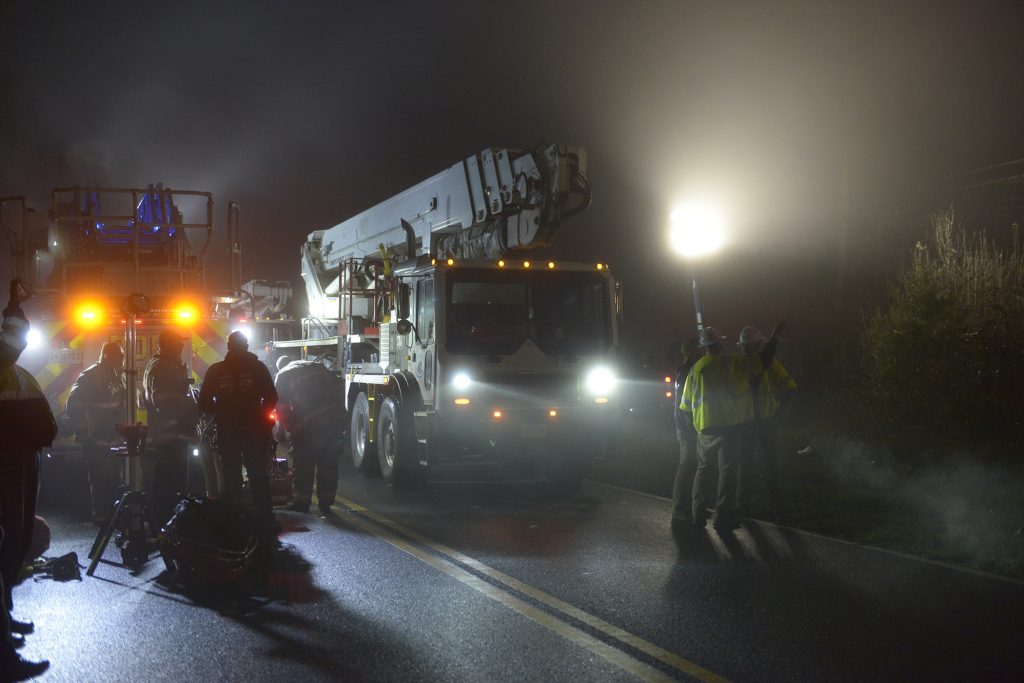
While onsite crews awaited the cranes, the Pepco team worked on rerouting the electricity through functioning towers and substations to safely restore power to customers typically served by the now-damaged tower.
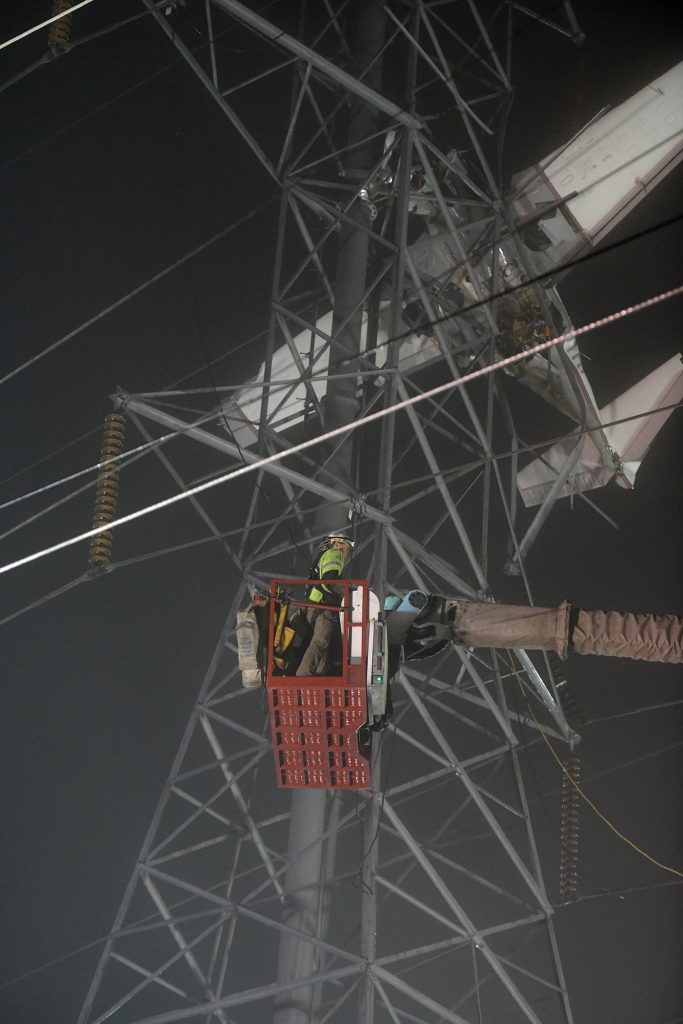
“Whether a hazard is man-made or caused by Mother Nature, our challenge is to safely restore our infrastructure that may be damaged by unforeseen circumstances,” said Yakubics. “Our focus on emergency response preparedness includes regular drills to ensure we are ready to respond to all types of incidents – even something we have never seen before.”
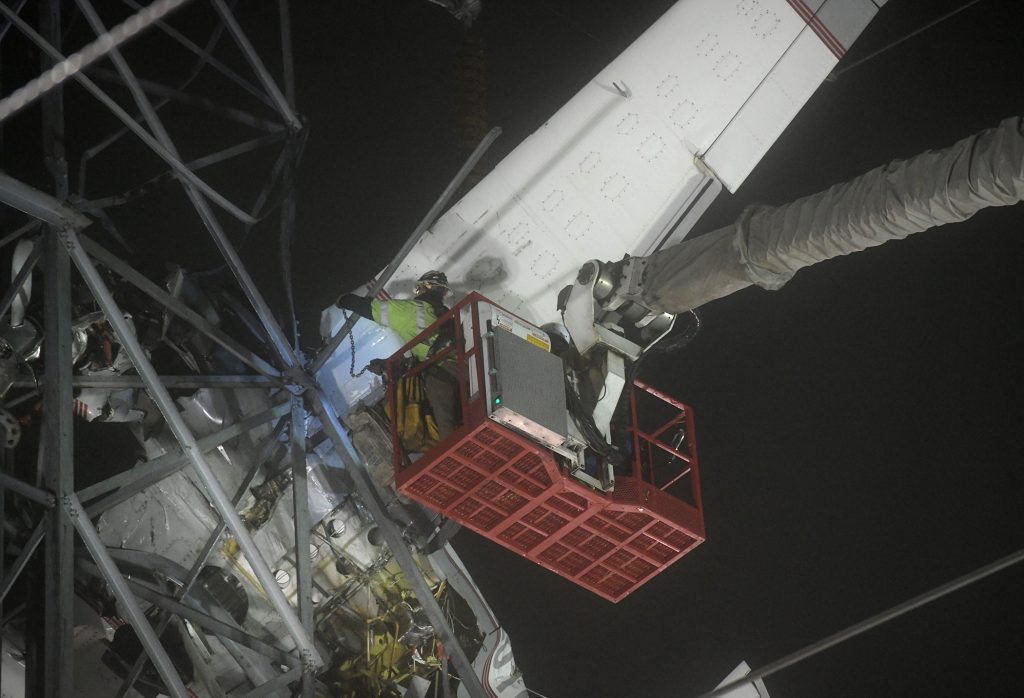
Pete Pedersen, manager of emergency preparedness for Pepco, was also on the ground that night. Pedersen, who has worked closely with the first responders on a variety of weather events and emergency situations shared, “I cannot overstate the value of our longstanding partnerships with these organizations. Even though we’ve worked together during many challenging situations, these were still unusual circumstances,” he reflected. “It was gratifying to experience that level of collaboration and trust.”
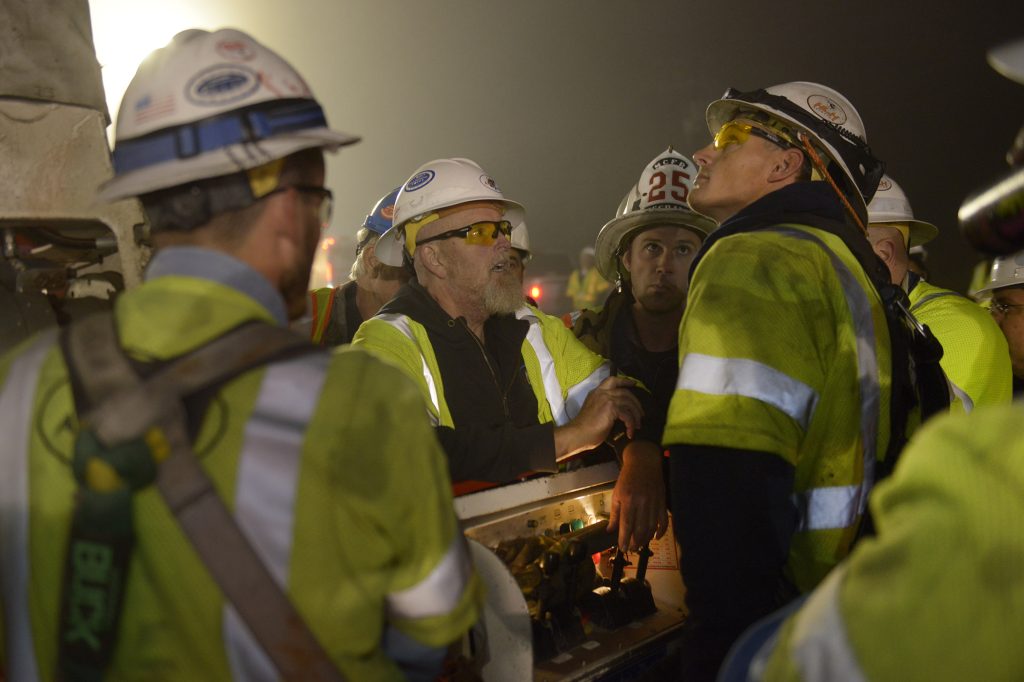
11:58 PM After extensive coordination and preparation, a small team was cleared to make the rescue, bringing both passengers safely to the ground.
Around this same time, electric service was restored to all impacted customers.
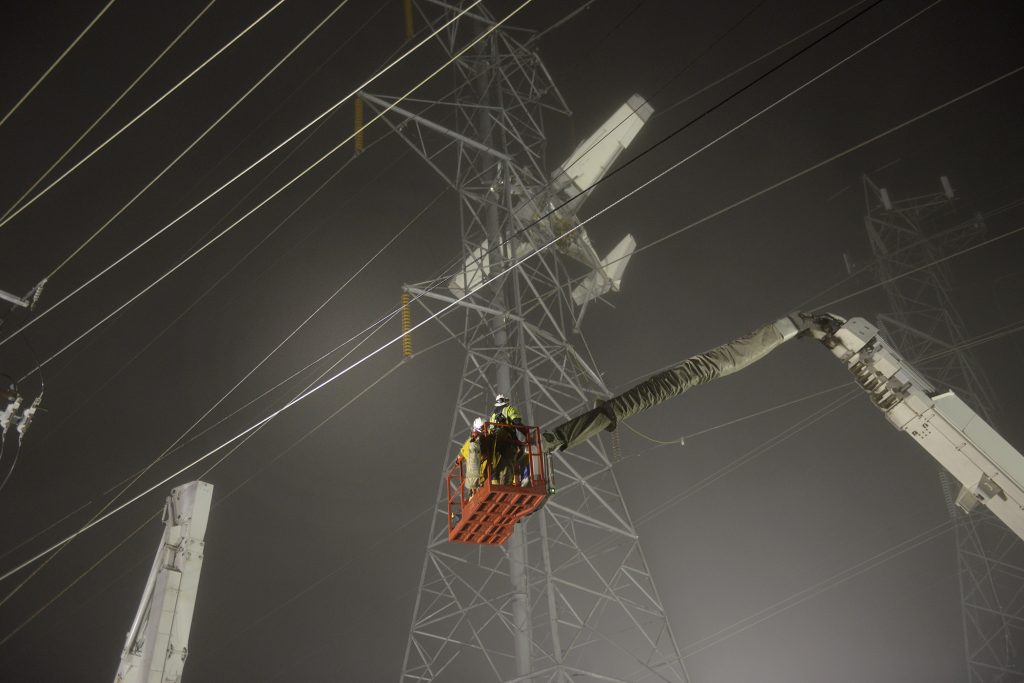
Chai described the moment, “When they got out and stepped on the wings of the plane, it was shaking. We were all on edge. Once they were safely in the bucket and coming down, we were able to finally take a breath.”
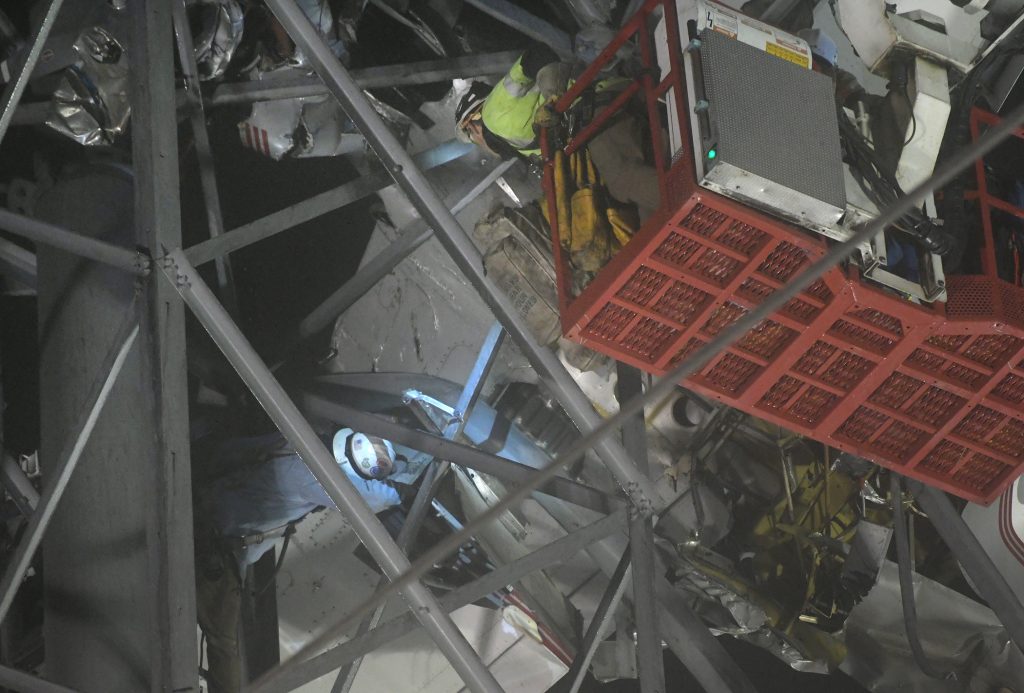
Giammaria was impressed by the leadership and collaboration he saw from each team. He told us, “I can’t say enough about the fire department. This is what they train for and when it came to the rescue, they knew what they wanted to do. And I was so proud of the leadership on our side.”
As the passenger and pilot departed for medical attention, the other responding departments began to leave the scene as well. The job of the Pepco team and our AUI Power counterparts was not quite complete — they still had to bring a plane down from a transmission tower.
2:00 AM A crane is deployed to begin recovery of the aircraft from the tower.
In assessing the damage, crews identified that the engine had already partially separated from the body on impact. The next step was to cut the engine free from the body of the plane to allow the pieces to dislodge from the tower. Using the crane, operators then lifted the body of the plane out of the tower and lowered it to the ground. They then lowered the engine, separately. The seemingly herculean feat took just one hour to complete.
3:00 AM The plane is recovered from the transmission tower. Nine hours later, the remaining crews headed home to get some rest.

